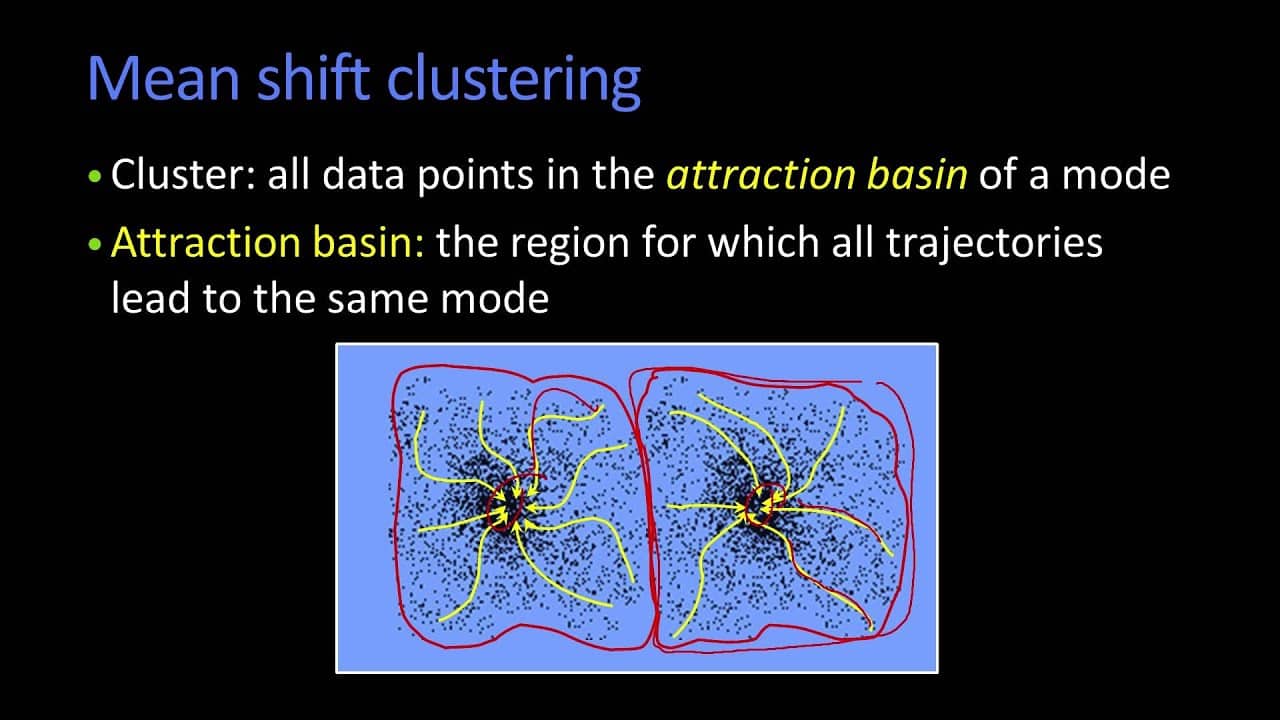Mean shift clustering is a machine learning technique used for finding structure in unstructured data. It is a non-parametric clustering technique, meaning it does not rely on any predetermined parameters. It is mainly used for exploratory data analysis, and is typically used when the data is difficult to partition using traditional methods.
The algorithm works by first assigning points to initial clusters, then converging them to the locations of the optimal clusters. This is done by moving points around in the cluster until the direction of movement is minimized. This is repeated until the points no longer move, thus settling into the local maxima of the cluster.
Mean shift clustering is an effective and powerful technique for discovering the latent structure within unstructured datasets. It eliminates the need for pre-defined parameters, is easy to implement, and can detect clusters of varying shapes and sizes. It is particularly useful for applications that require finding clusters with high dimensionality.
However, since the algorithm is closely dependent on the distance parameter, choosing an optimal value can be difficult. It also requires iteration, meaning large datasets are computationally intensive and can take a long time to process. Finally, the algorithm tends to work best when the clusters are well-separated or distinct in some way.
Mean shift clustering is a popular and powerful tool for discovering clusters in unstructured datasets. It has the benefit of eliminating the need for prior assumptions, and it offers a high degree of accuracy when used on high-dimensional datasets. While it does have its challenges, such as requiring proper parameterization, it can be a powerful tool for uncovering the latent structure of unstructured data.






